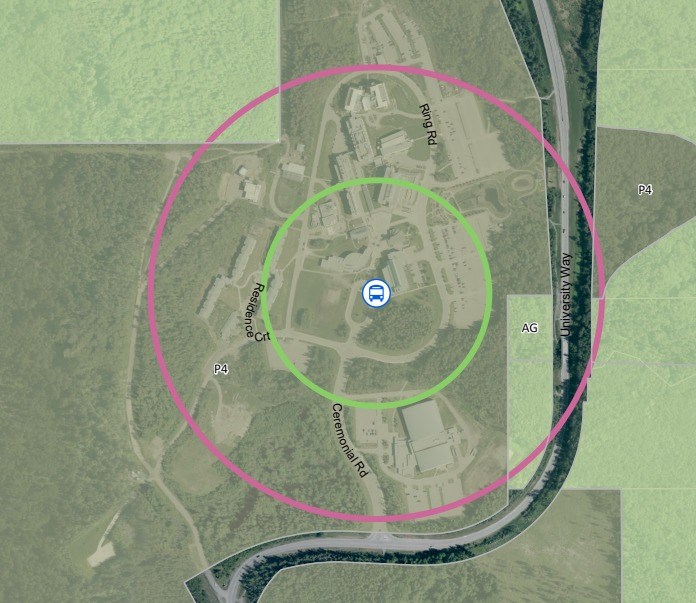City council members are questioning whether the University of Northern British Columbia is the right spot for provincially-mandated high-density development.
Under the criteria the province has directed municipalities to follow, UNBC qualifies as a "transit-oriented area" such that complexes of up to 10 storeys will be allowed within 200 metres of the bus exchange and up to six storeys within 200-400 metres of the spot.
On paper, UNBC meets the criteria for a TOA: 15-minute service frequency, two or more unique routes, service seven days per week and one route operating at least 12 hours per day.
However, Coun. Cori Ramsey contends that in truth, just one route serves the campus and there are busier transit hubs down in the city proper.
"When you look at the mapping data for the transit system, it looks like there are two bus routes that go up to UNBC, the 15 and the 16, and while that is true, the 15 becomes the 16 and does its loop and turns back into the 15," Ramsay said during council's regular meeting on Monday.
"And while there are increased buses on certain times of the day, when there are more people, it's actually a greater amount of traffic and transfers at, I think, 15th and Dominion and the Nicholson Exchange, where the 88, the 89 and the 15 up and down are all in the same place at the same time.
"It's just more locations in town where the transit is more frequent than at UNBC because at certain times of the year it can be 45 minutes to an hour before there is service there."
A lot of land at UNBC is locked up in a land trust, Ramsay also noted, and so plenty of red tape would likely be involved to get a development off the ground.
"I don't know that this is going to fulfill the province's desired outcome," Ramsay said.
Council unanimously approved her motion to refer the matter to the intergovernmental affairs committee to come up suggestions to take to the provincial governments for spots around the city that would work better as TOAs.
"I think that if you go to the province with solutions on where this might be better suited...it might be well received," Ramsay said.
In the meantime, and facing a June 30 deadline to do so, council also gave third reading to a bylaw that brings its zoning bylaw in line with provincial legislation, which will also allow triplexes and fourplexes on property zoned for single-family residential.
On lots no greater than 280 square metres, three units will be allowed and on lots over that size, four units will be allowed without going through the rezoning process.
That step did not go over well with Coun. Garth Frizzell, who was told it would not be advisable to reject the bylaw at third reading because doing so would be contrary to provincial legislation.
"It gives a real appearance of us making the decision but it's an assertion of paramouncy in our system," Frizzell said.



